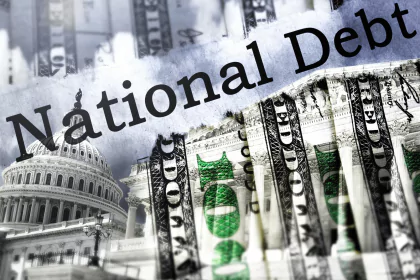Introduction
Why are crypto investments surging amid recent U.S. macroeconomic shifts? The crypto market has seen a substantial inflow of investments, totaling $2 billion, driven by evolving economic conditions in the U.S. This article delves into the factors fueling this surge, examining the interplay between macroeconomic trends and the burgeoning interest in cryptocurrencies.
The Surge in Crypto Investments
Recent data reveals that investment in crypto-related financial products experienced a significant boost, with net inflows of $2 billion last week alone. This surge marks a notable trend in the crypto investment landscape, highlighting the growing confidence among investors despite ongoing economic uncertainties.
Context and Background
The U.S. economy has faced several macroeconomic challenges, including fluctuating interest rates, inflation concerns, and shifting fiscal policies. These factors have created a dynamic environment for investments, prompting many to seek alternative assets like cryptocurrencies.
Investor Confidence and Market Dynamics
According to CoinShares, the latest weekly report showed that this influx is the second-longest streak of positive inflows since the approval of spot Bitcoin ETFs by the U.S. Securities and Exchange Commission (SEC) in January. This positive sentiment among investors can be attributed to several key factors:
Weak Macroeconomic Data
The U.S. economy’s weaker-than-expected performance has fueled expectations for potential monetary policy easing. This scenario often drives investors towards assets that are perceived as hedges against economic instability, such as cryptocurrencies.
Rising Asset Management
The positive price movements have pushed total assets under management (AuM) in crypto investments above the $100 billion mark for the first time since March 2024. This increase in AuM reflects the heightened interest and confidence in the crypto market.
Increased Trading Activity
Last week, the trading volume for crypto investment products soared by 55%, reaching $12.8 billion, up from $8 billion in the previous week. This surge indicates a renewed vigor in trading activities, driven by favorable market conditions.
Key Cryptocurrencies Leading the Charge
Bitcoin (BTC)
Bitcoin continues to be a major attraction for investors, registering $1.9 billion in inflows. This significant interest underscores Bitcoin’s role as a cornerstone of the cryptocurrency market.
Ethereum (ETH)
Ethereum also saw impressive inflows, with $69 million, marking its best week since March. This resurgence can be linked to the approval of several spot Ethereum ETF 19b-4 filings by the SEC, boosting investor confidence.
Other Altcoins
While other significant altcoins like Fantom and XRP recorded inflows of $1.4 million and $1.2 million respectively, the overall activity remained relatively subdued compared to Bitcoin and Ethereum.
Implications of the Inflows
Market Stability and Growth
The consistent inflows into crypto assets suggest a growing maturity and stability in the market. Investors are increasingly viewing cryptocurrencies as viable long-term investments rather than speculative assets.
Influence of Institutional Investors
Institutional investors play a crucial role in this trend. Firms like BlackRock, Fidelity, and ProShares have significantly contributed to the inflows, indicating a broader acceptance of cryptocurrencies within mainstream financial circles.
Conclusion
The surge in crypto investments amidst U.S. macroeconomic shifts highlights a pivotal moment for the market. As traditional economic indicators waver, cryptocurrencies are emerging as a reliable alternative for investors seeking stability and growth. This trend underscores the evolving landscape of global finance, where digital assets play an increasingly central role.
FAQ — Popular Questions and Answers
U.S. economic shifts, such as changes in interest rates and inflation, drive investors towards cryptocurrencies as they seek alternative assets for stability and growth.
Bitcoin and Ethereum are currently attracting the most investment, with significant inflows reflecting their central role in the market.
Increased crypto inflows suggest growing market stability and acceptance of digital assets as viable long-term investments.
Institutional investors like BlackRock and Fidelity are significantly contributing to the inflows, indicating broader acceptance and influence in the market.
The outlook remains positive as investors continue to seek cryptocurrencies for stability and growth amidst traditional economic uncertainties.












